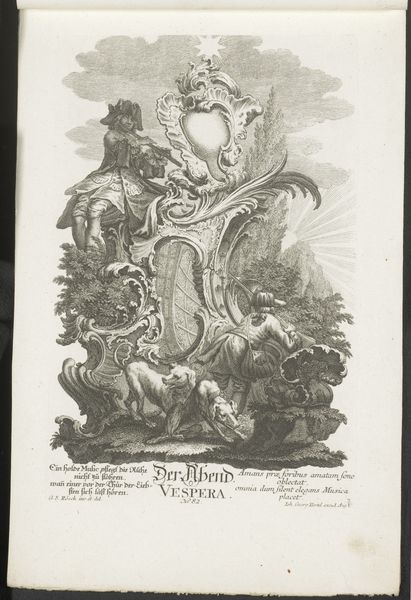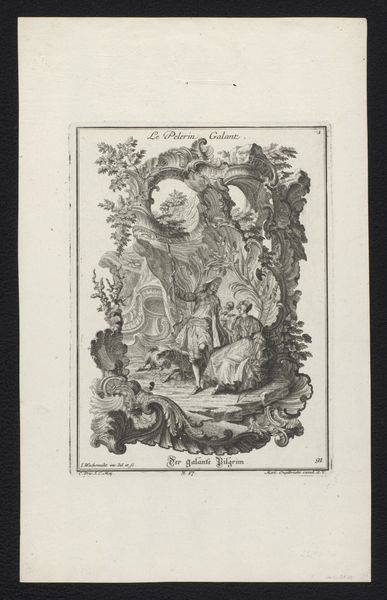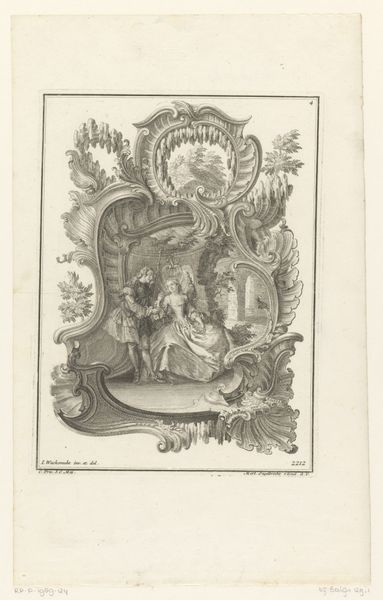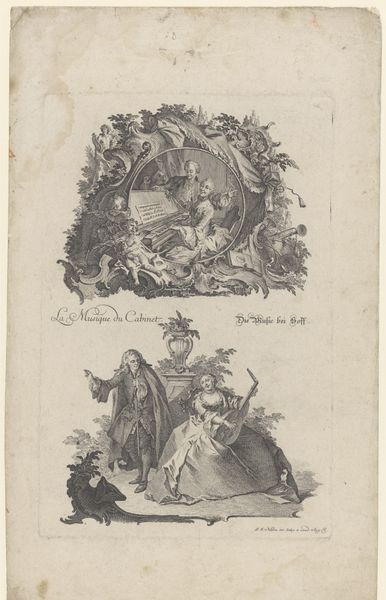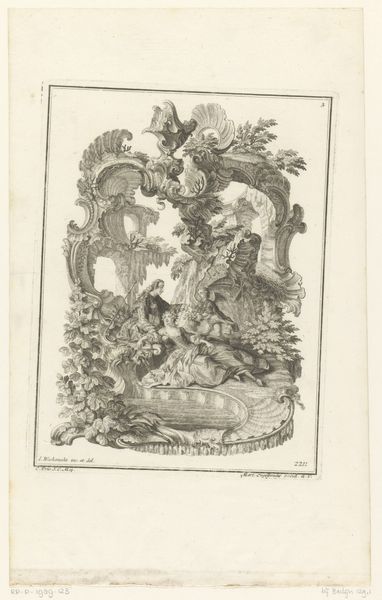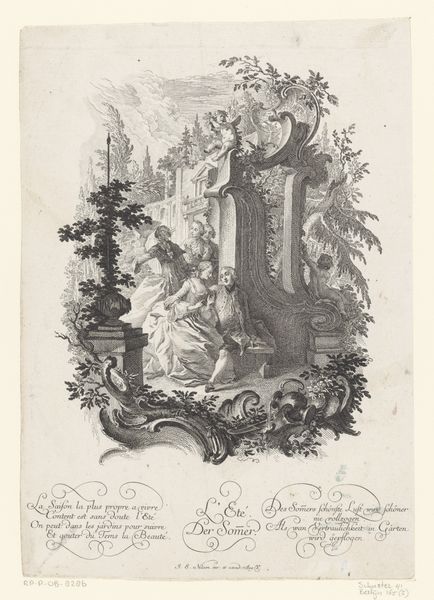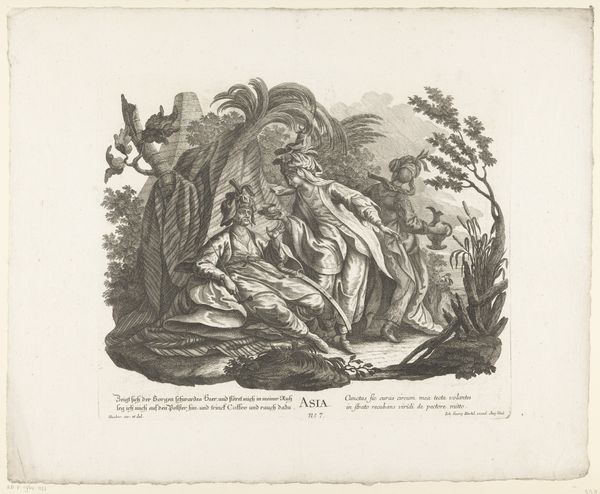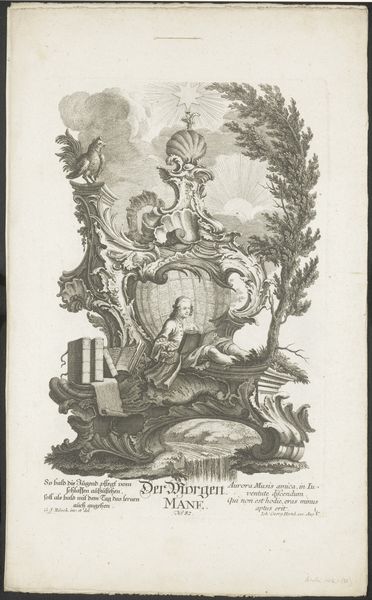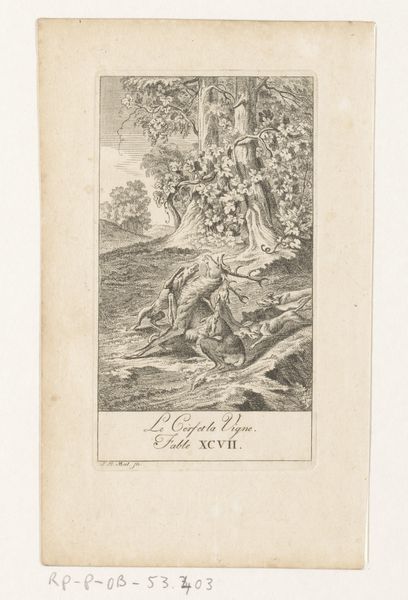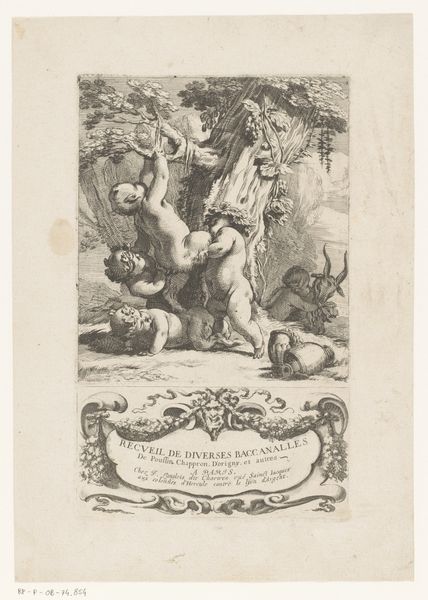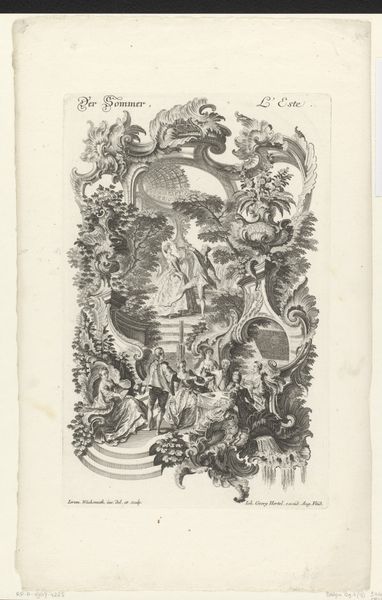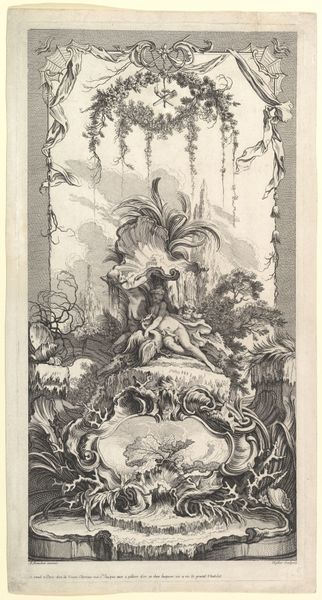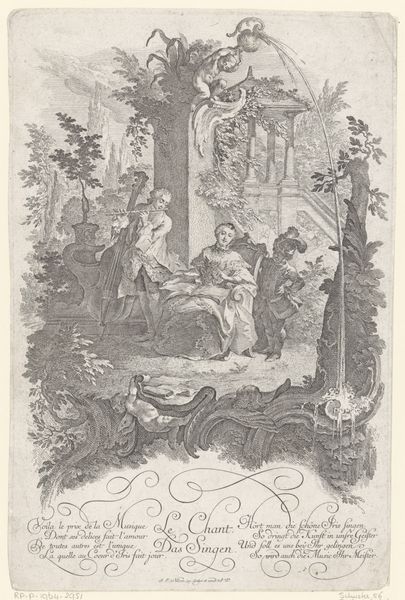
engraving
#
allegory
#
baroque
#
landscape
#
figuration
#
line
#
engraving
Dimensions: height 192 mm, width 299 mm
Copyright: Rijks Museum: Open Domain
Editor: This is Jakob Wangner's "Isis en Juno," an engraving from between 1731 and 1775. It's incredibly detailed, almost ornate, but also quite dreamlike. I am intrigued by the figure lounging on such an elaborate structure. What stands out to you in this piece? Curator: The first thing that grabs me is the medium itself. Engraving allowed for mass production and distribution of images, shifting art's accessibility and consumption patterns in the 18th century. Look closely. Do you notice the lines and how the density varies to create value? This required tremendous skill, almost like a specialized manufacturing process. Editor: Yes, it's amazing how detailed they were able to get! The way the lines create shadow is fascinating. Was that attention to detail common at the time? Curator: Think about the socio-economic context. Skilled artisans, the engravers, were becoming essential to spreading knowledge and artistic trends. This wasn't necessarily considered high art; it was a form of craft and reproduction used to disseminate images broadly. These weren’t unique works in the same way a painting would have been. Editor: That’s a good point. It shifts my perspective when I think about this as a produced object for wider consumption and not only fine art. So how does considering it craft influence how we appreciate the imagery itself, of the figures and the landscape? Curator: I believe we can examine the imagery in relation to labor and skill involved in engraving this scene, while challenging the high art or craft divide. Are we looking at luxury item or educational material, considering the context of materials, reproduction and class? This pushes us beyond purely aesthetic considerations to the very conditions of the artwork’s existence. Editor: That's a perspective I hadn't considered. Examining the piece as a material object, made through labor and production, opens up new ways to interpret its place in the world. Curator: Precisely. The focus shifts from simply admiring the allegory or the style to understanding the conditions of its creation and its role in the broader social fabric of the time.
Comments
No comments
Be the first to comment and join the conversation on the ultimate creative platform.
